| The Deluge:
Scenario Preview, Part Three
By Mike Bennighof, PhD
October 2020
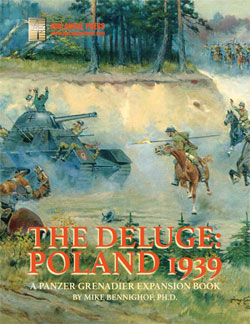 Fight them ’til hell freezes over, then fight them some more on the ice. Fight them ’til hell freezes over, then fight them some more on the ice.
- Dutch Meyer
I find the 1939 September Campaign (the Fall of Poland) to be a fascinating bit of history: it’s over in a closely-defined period of time (exactly one month), in a specifically-defined geographic area (1939 Poland, with a tiny slice of East Prussia). The Poles fought until every inch of Poland had been conquered, and then they fought some more. The combatants, somewhat surprisingly (to me at least) are less well-defined; though that’s changed some in recent years on the Polish side, on the German side there’s still a great deal of otherwise-good history that seems to view the September Campaign as a warm-up, with the real events starting in May 1940 with the invasion of France and the Low Countries.
I’ve also come to really like using the scenario sets of Panzer Grenadier games and expansions to tell a story. You can do that in a number of ways, but I’ve come to prefer stringing together multiple actions by the same formation (sometimes against the same opposing formation) over several days, sort of a mega-scenario split into parts, with the battle game tying them together.
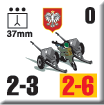 That’s not how I designed the old White Eagles book, from which we’re using the playing pieces and some of the scenarios (after some upgrades, sometimes extensive ones). That book used the shotgun approach, picking actions here and there that were individually interesting, but with no real connection between them other than all coming from the September Campaign. That’s not how I designed the old White Eagles book, from which we’re using the playing pieces and some of the scenarios (after some upgrades, sometimes extensive ones). That book used the shotgun approach, picking actions here and there that were individually interesting, but with no real connection between them other than all coming from the September Campaign.
For The Deluge, I went with the story-arc format. The scenarios are grouped together in chapters to tell the story of just one aspect of the campaign. All of them take place in the first few days of the campaign, most of them on the very first day. Let’s have a look at Chapter Three:
Chapter Three
West Prussia
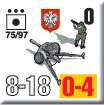 While the German Fourth Army attacked the western border of the Polish Corridor separating East Prussia from the rest of Germany, one corps of the Third Army stationed in the isolated province attacked from the east to join up with them. This time the odds were even, with the Germans deploying two infantry divisions in the attack with the Polish Army Pomorze stationing two infantry divisions in the area to oppose them. While the German Fourth Army attacked the western border of the Polish Corridor separating East Prussia from the rest of Germany, one corps of the Third Army stationed in the isolated province attacked from the east to join up with them. This time the odds were even, with the Germans deploying two infantry divisions in the attack with the Polish Army Pomorze stationing two infantry divisions in the area to oppose them.
As with the rest of Army Pomorze, the Poles put up stout resistance on the first day of the war and gave the Germans only a single, limited success. Their position would be undone by the rapid penetration of German mechanized units around their flanks and into their rear areas, while the clearing weather allowed more effective German air support. But on the war’s first day, at least, the Poles showed that they could stand and fight.
Scenario Fourteen
The Crossing at Tczew
1 September 1939
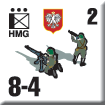 Shortly before the German assault on Poland began, a small special operation tried to seize the bridge over the Vistula at Tczew. Polish railway workers alerted the garrison, who drove off the attackers and blew up the bridge. Later that day the Germans returned to make a conventional assault against the town and the crossing site with combat engineers and Waffen SS militia. Shortly before the German assault on Poland began, a small special operation tried to seize the bridge over the Vistula at Tczew. Polish railway workers alerted the garrison, who drove off the attackers and blew up the bridge. Later that day the Germans returned to make a conventional assault against the town and the crossing site with combat engineers and Waffen SS militia.
Conclusion
The Polish riflemen fought off the German river crossing, and devastated the SS militia trying to attack from the west bank of the Vistula. The SS continued their weak attacks throughout the day but the Poles could not be dislodged from Tczew. During the night the rifle battalion slipped away as part of the general withdrawal of Army Pomorze.
Notes
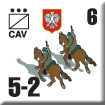 The Poles are facing attacks from two directions, with a German pioneer battalion paddling across the Vistula and a mob of SS militia bumbling their way down the bank of the river. The SS are already on the Polish side, but their weak morale and weaker leadership make them little more than rife-range targets for the Poles. The Poles need to take the time to wipe them out, so they don’t sneak in the back door, but the engineers are the real threat. The Poles are facing attacks from two directions, with a German pioneer battalion paddling across the Vistula and a mob of SS militia bumbling their way down the bank of the river. The SS are already on the Polish side, but their weak morale and weaker leadership make them little more than rife-range targets for the Poles. The Poles need to take the time to wipe them out, so they don’t sneak in the back door, but the engineers are the real threat.
Scenario Fifteen
Osa River Line
1 September 1939
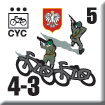 Advancing from East Prussia westwards into Polish territory, the German XXI Corps had a first-day objective of securing the city of Grudziaz (Graudenz) and pushing across the Osa river. The Polish 16th Infantry Division had only mobilized eight days before the invasion but Grudziaz was its home station and its soldiers quickly moved to the south bank of the Osa to defend their homes. Advancing from East Prussia westwards into Polish territory, the German XXI Corps had a first-day objective of securing the city of Grudziaz (Graudenz) and pushing across the Osa river. The Polish 16th Infantry Division had only mobilized eight days before the invasion but Grudziaz was its home station and its soldiers quickly moved to the south bank of the Osa to defend their homes.
Conclusion
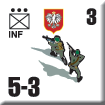 The Poles repelled repeated German assaults, until the Germans held back their infantry and allowed their artillery to bombard the Poles. Afterwards the invaders managed to get substantial forces across the Osa and maintain a bridgehead. Now the Poles attacked, with insistent fury, but despite their determination they had not thrown the Germans back across the river when night fell. Reinforcements arrived under cover of darkness, but a night attack coordinating units from two divisions was beyond Polish capabilities and the effort would have to await daylight. The Poles repelled repeated German assaults, until the Germans held back their infantry and allowed their artillery to bombard the Poles. Afterwards the invaders managed to get substantial forces across the Osa and maintain a bridgehead. Now the Poles attacked, with insistent fury, but despite their determination they had not thrown the Germans back across the river when night fell. Reinforcements arrived under cover of darkness, but a night attack coordinating units from two divisions was beyond Polish capabilities and the effort would have to await daylight.
Notes
This is a big scenario; I wanted to include a few that would allow multi-player play or just be really big. In this one, two Polish battalions fighting off four German ones trying to force a river crossing. The Poles will get reinforcements to mount a flank attack, if they can hold on long enough for that to matter.
Scenario Sixteen
Reinforcing Failure
1 September 1939
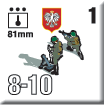 Lt. Gen. Nikolaus von Falkenhorst of XXI Corps had two divisions, one a “First Wave” regular army outfit and the other a hastily-organized training unit upgraded to infantry division status five days before the invasion of Poland began. Falkenhorst had also been assigned a separate tank battalion from Army high command reserves, and he attached it to the weaker of his divisions in hopes of buttressing its combat power and its will to fight. Lt. Gen. Nikolaus von Falkenhorst of XXI Corps had two divisions, one a “First Wave” regular army outfit and the other a hastily-organized training unit upgraded to infantry division status five days before the invasion of Poland began. Falkenhorst had also been assigned a separate tank battalion from Army high command reserves, and he attached it to the weaker of his divisions in hopes of buttressing its combat power and its will to fight.
Conclusion
Armor support could not overcome the weak will of the German second-line infantry in this sector, and the Poles held the line along the Osa River. A single Polish battery claimed nine panzers, and the Germans fell back in some disarray. German failure here was cancelled by the success of 21st Infantry Division to the west.
Notes
This is also a river crossing, but not as large. There are a lot of Germans, and they have a lot of tanks, but they’re not all that eager for confrontation. The Poles are outnumbered but ready for action, and this time they have artillery of their own.
And that’s all for Chapter Three. Next time, we look at Chapter Four.
You can order The Deluge right here.
Please allow an additional two weeks for delivery.
Sign up for our newsletter right here. Your info will never be sold or transferred; we'll just use it to update you on new games and new offers.
Mike Bennighof is president of Avalanche Press and holds a doctorate in history from Emory University. A Fulbright Scholar and NASA Journalist in Space finalist, he has published countless books, games and articles on historical subjects.
He lives in Birmingham, Alabama with his wife, three children and his dog, Leopold.
Want to keep Daily Content free of third-party ads? You can send us some love (and cash) through this link right here. You don’t have to, but Leopold would like it if you did.
|
